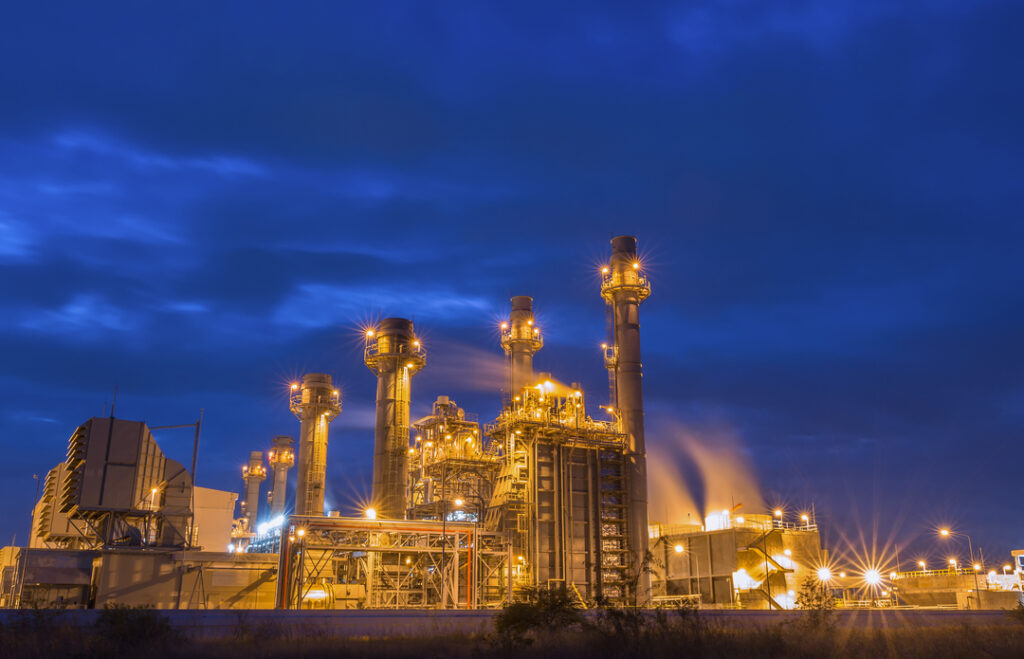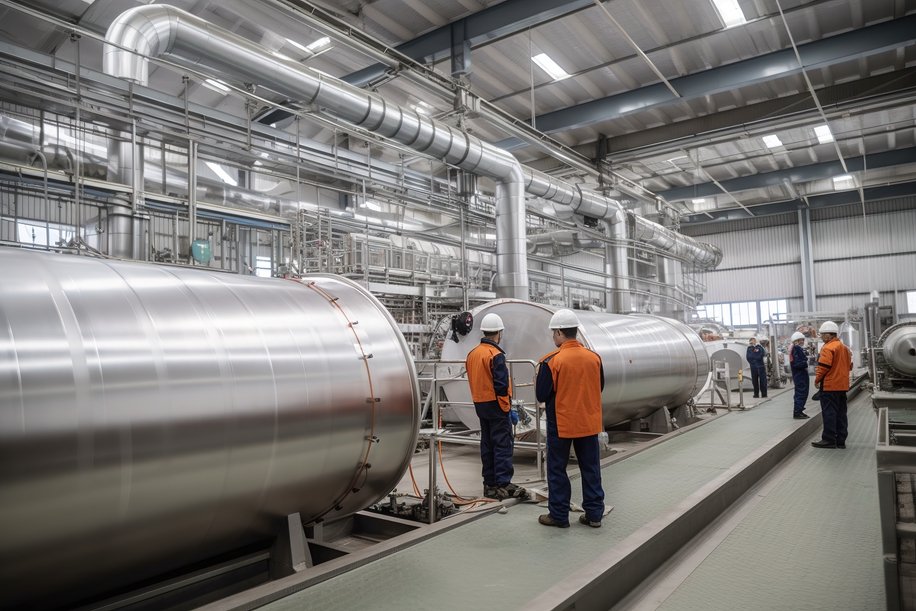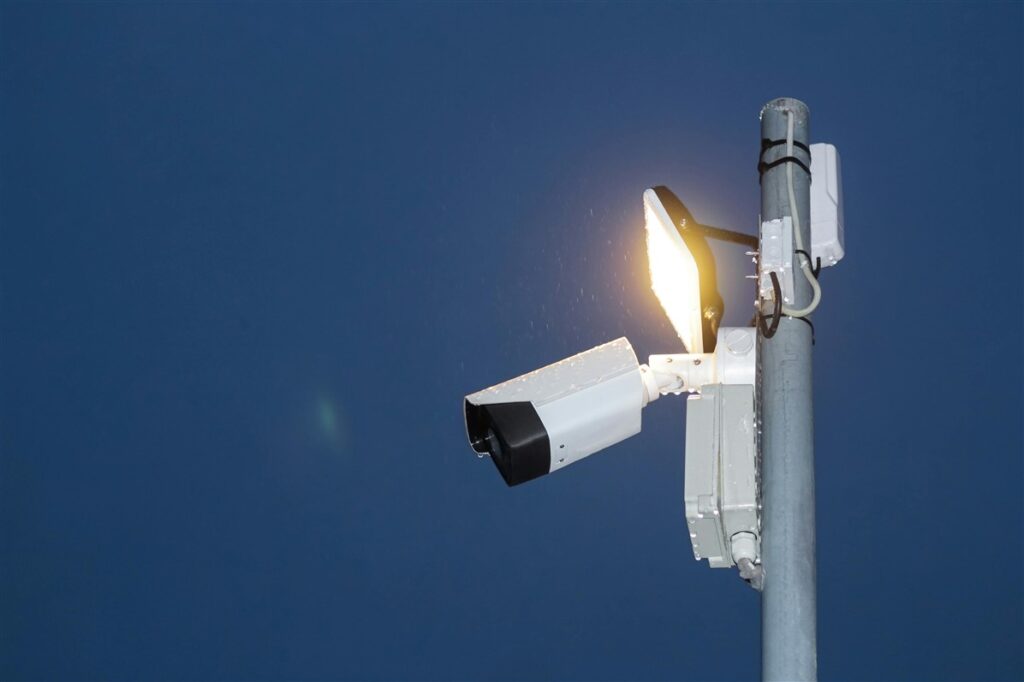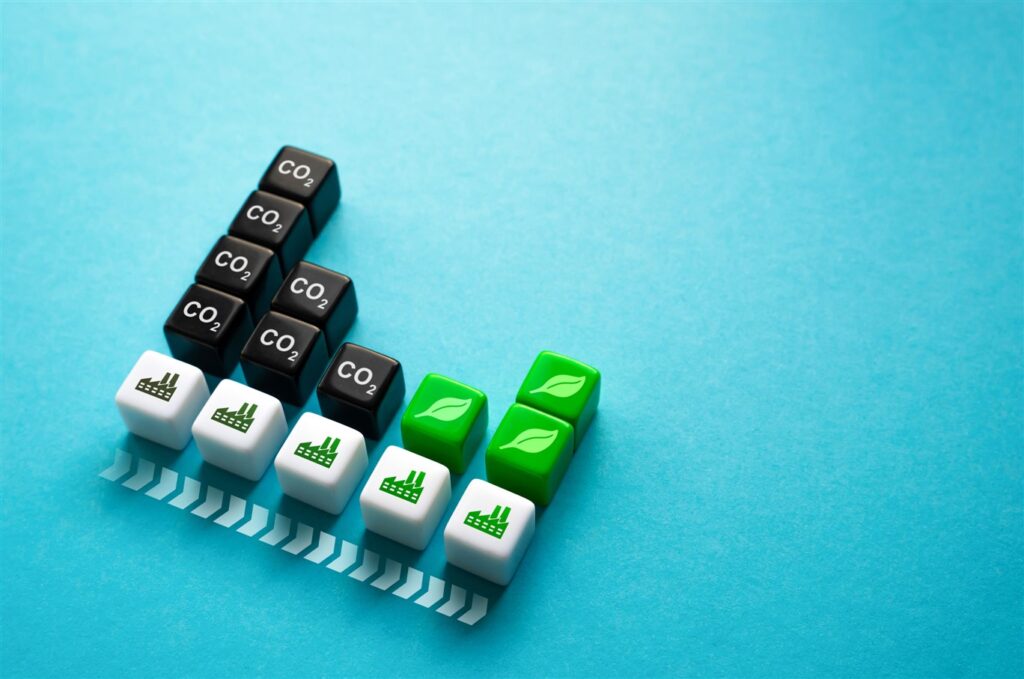What is the role of companies in reducing our carbon footprint?
We should all be taking responsibility for protecting our planet and a big part of that is reducing our carbon footprint. But while it falls to all of us to do our bit, there is additional pressure on manufacturers, especially those with high carbon emissions.
As an absolute minimum, these companies should ensure compliance with existing environmental regulations and stay informed about evolving sustainability standards, adjusting practices accordingly.
But for manufacturers who want to play a larger role in reducing carbon emissions, there are plenty of opportunities to improve green credentials.
Reduce energy use
Start simple – reduce your energy consumption. There are hundreds of small things you can do to improve efficiency and reduce energy waste. But if you want to make more significant improvements, the three main areas to look at are:
Lighting: if your business still uses old lighting systems, it could be time for an upgrade – LED lighting is by far the most energy-efficient solution. You should also consider lighting systems such as timers and motion sensors, solar-powered lights, daylight sensors and directional lighting and partitioning.
Heating and ventilation: temperature control and ventilation are important, but HVAC systems can be a huge drain on power. Consider switching out old systems for newer technology such as heat pumps or CHP systems, SMART thermostats, and automated ventilation.
Machinery: most machinery requires power, and where there is power, there is an opportunity for increased efficiency. Upgrade old appliances and consider energy-saving technologies such as voltage optimisation systems, variable speed drives, and control and automation.

Invest in renewable energy
Transitioning to renewable energy sources, such as solar, wind, or hydropower is a big step in reducing carbon emissions. You can do this by switching to a green energy supplier. Or, better still, assess the feasibility of generating your own electricity.
Wind and solar power are the most viable options for smaller businesses. Wind-solar hybrid solutions are also an option, allowing you to benefit from sunshine in the summer months and make use of the wind during the winter.
Not only does generating your own power reduce your carbon footprint, it also offers many other benefits, including:
• Reduced energy bills – third-party costs can make up as much as 60% of an electricity bill.
• Price protection – when you get electricity from the grid, you’re subjected to price increases or fluctuations.
• Source of revenue – if you generate excess electricity, it’s possible to sell it to nearby consumers or suppliers.
• Less waste – control how much power you produce and store any excess power to be used at peak times.
• Reduce dependence on the grid – generating some or all your own power reduces your dependence on the grid.
Develop greener products and processes
While energy efficiency focuses on strategies to reduce energy use and waste, material efficiency relates to the materials used in manufacturing and the waste produced during production.
But don’t just look at what happens inside the factory – look at the entire supply chain and the full product lifecycle. To do this you need to assess and understand the environmental impact of every component and process.
This starts with the raw materials. Where do they come from? Are they made from renewable resources? What measures are your suppliers taking to reduce their carbon emissions, and what about their suppliers?
Then you need to look at your own production, packaging and transportation processes. How can these be improved?
And it doesn’t stop when the product leaves the factory – what happens afterwards? Which components can be reused and recycled? Are there opportunities to encourage end-users to repair or recycle? How can you reduce the impact your product has on the environment when it reaches the end of its life?
Once you understand the entire product lifecycle, you can incorporate more eco-friendly design principles and reduce the environmental impact of products by designing for sustainability and recyclability.

Explore opportunities for carbon capture and storage or offsetting
Where carbon emissions are unavoidable, look at opportunities for carbon capture and storage (CCS) or carbon offsetting.
Carbon capture has been in operation in the US since 1972 and has grown rapidly in recent years, with CCS facilities being developed across the globe.
There are three stages to CCS – capture, transportation, and storage. First, the CO2 is separated from other gases produced in industrial processes. Then it is transported via pipelines, road or sea to a CCS facility. It is then injected into rock formations underground for storage.
There is also research being conducted into the feasibility of reusing carbon rather than storing it. The idea is that it could be converted into products such as plastic, concrete, or biofuel.
If your factory has high carbon emissions, it’s worth exploring and investing in CCS technologies. Look for opportunities to collaborate with research institutions and government initiatives focused on CCS development.
If CCS isn’t possible, look at carbon offsetting programs to compensate for unavoidable emissions.
Offsetting initiatives include:
• Woodland creation
• Grassland preservation
• Methane capture
• Biogas projects
• Windfarms
• Solar-powered projects
• Ocean clean-ups
• Landfill gas management
Look for projects that can prove they remove carbon from the atmosphere. Choose those that wouldn’t go ahead without your support – you aren’t really offsetting if the project was due to go ahead without you.

Be at the forefront of change
The future of green factories is clear – they will be the ones that thrive. The pressure on governments is too great for them to allow manufacturers to continue damaging the environment.
But don’t look at decarbonisation as an obligation – look at it as an exciting opportunity to be at the forefront of change and innovation.
• Look for opportunities to utilise or trial new technologies – don’t be afraid to be an early adopter.
• Reach out to sustainability-focused business partners and join conversations within the industry – be part of the bigger picture.
• Invest in research and development to discover and implement innovative technologies that reduce carbon emissions.
• Support innovation hubs and collaborate with research institutions for sustainable solutions.
• Collaborate with government bodies and industry associations to establish and adhere to environmental standards.
• Participate in initiatives that promote sustainable practices in the heavy manufacturing sector.
Share your goals and progress
Be loud and proud about your commitment to energy efficiency. Do you want to be carbon net zero in the next ten years? Tell the world. Share your targets with your stakeholders, your customers, and your teams. Make sustainability a core value and a priority.
Don’t make a few token gestures and then forget about your targets. Keep working toward that net-zero goal. You might not reach it, but you should always be striving to get as close as possible.
Educate employees on the importance of reducing your carbon footprint and encourage them to engage with sustainability initiatives – seek their input and insights.
Getting your employees, customers and suppliers engaged in your vision will contribute to your success.

Working with AES
As part of our mission to collectively reduce carbon emissions, we offer free energy reduction audits to manufacturers.
You’ll receive a full report detailing where energy consumption savings can be made and the potential cost savings to your business.
We also offer energy reduction services specifically for manufacturers. These include:
• Energy efficient lighting
• Voltage optimisation
• Power factor correction
• Variable speed drives
• Control and automation
• Battery Energy Storage Solutions (BESS)
• Electrical vehicle charge points
If you’d like to start your journey to net-zero, get in touch to find out how AES can support your sustainability targets.

Our guide to building energy management systems
Building energy management systems (BEMS) are systems that allow you to monitor, control, and optimise the energy used within your building. The phrase building energy management system (BEMS) is often used interchangeably with the phrase building management system (BMS), but there are some differences. A BEMS is focused on energy-related systems such as lighting, heating, […]
Read more
How far does power travel and what impact does distance have on performance
It’s easy to take our electricity supply for granted. We flick a switch and instantly have light or power. We don’t even think about it unless there’s an issue or an outage. But when there is an issue or outage, the impact can be significant. For manufacturers, even the smallest change in power can make […]
Read more
Why visibility of the production process is so important
Operational excellence, efficiency and quality are top priorities for almost every manufacturer worldwide. These things lead to improved productivity, happier customers and reduced waste – all of which result in increased profits. Visibility of the production process is the key to achieving these things. And manufacturers now have access to technology that can provide real-time […]
Read more
Will security lighting help to protect my staff?
Looking after the safety and well-being of employees should be a priority for any business. And while it’s not possible to mitigate every risk, there are measures you can take to improve their safety and security. One measure that is often overlooked is the installation of security lighting. When daylight disappears, visibility is reduced, increasing […]
Read more
Top 5 considerations when comparing electrical quotes
Budget is always a factor when you’re considering any type of upgrade, revamp, or maintenance work within your factory. But when it comes to electrical work, you have to consider more than just money. Don’t rush into accepting the cheapest electrical quotes without knowing exactly what you’re getting. Electrical work is not an area where […]
Read more
What is the role of companies in reducing our carbon footprint?
We should all be taking responsibility for protecting our planet and a big part of that is reducing our carbon footprint. But while it falls to all of us to do our bit, there is additional pressure on manufacturers, especially those with high carbon emissions. As an absolute minimum, these companies should ensure compliance with […]
Read more

